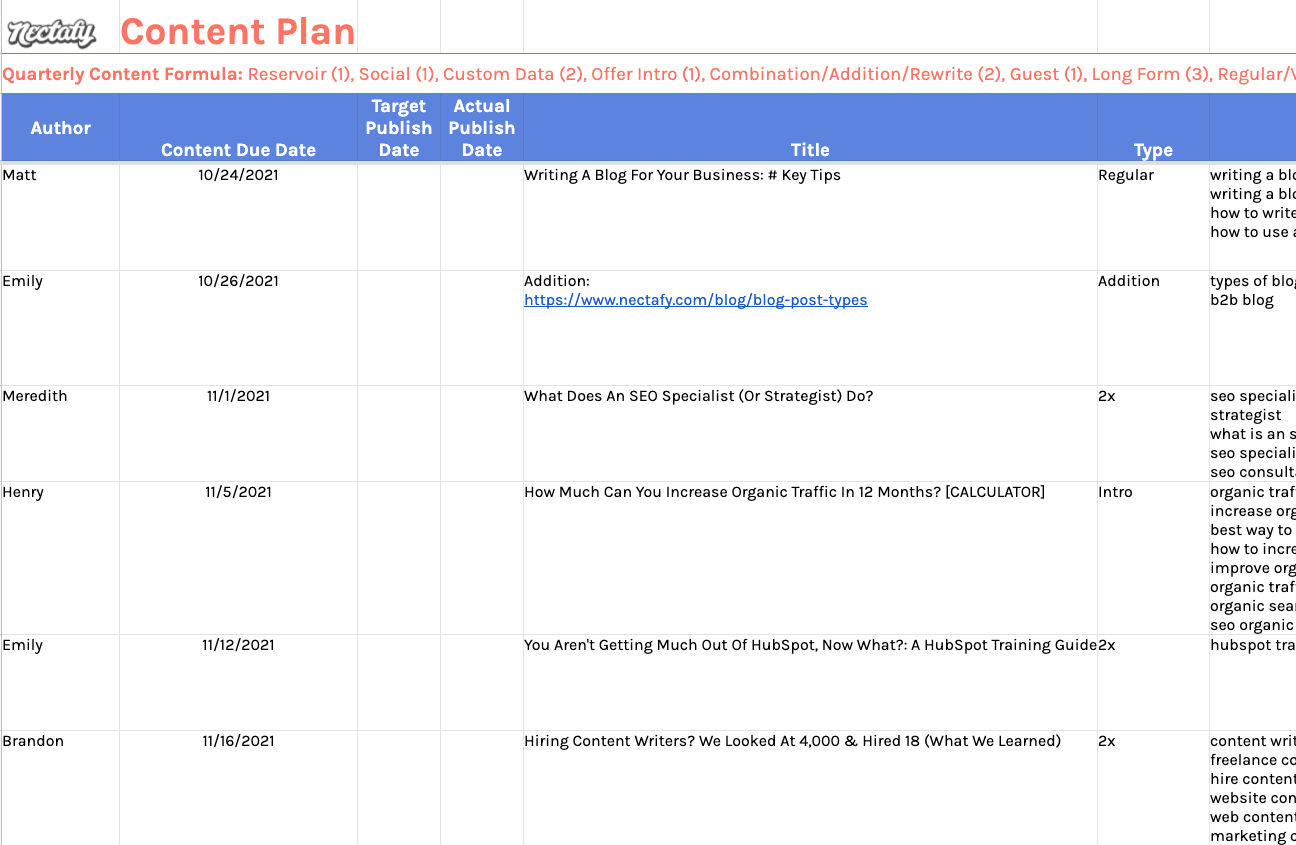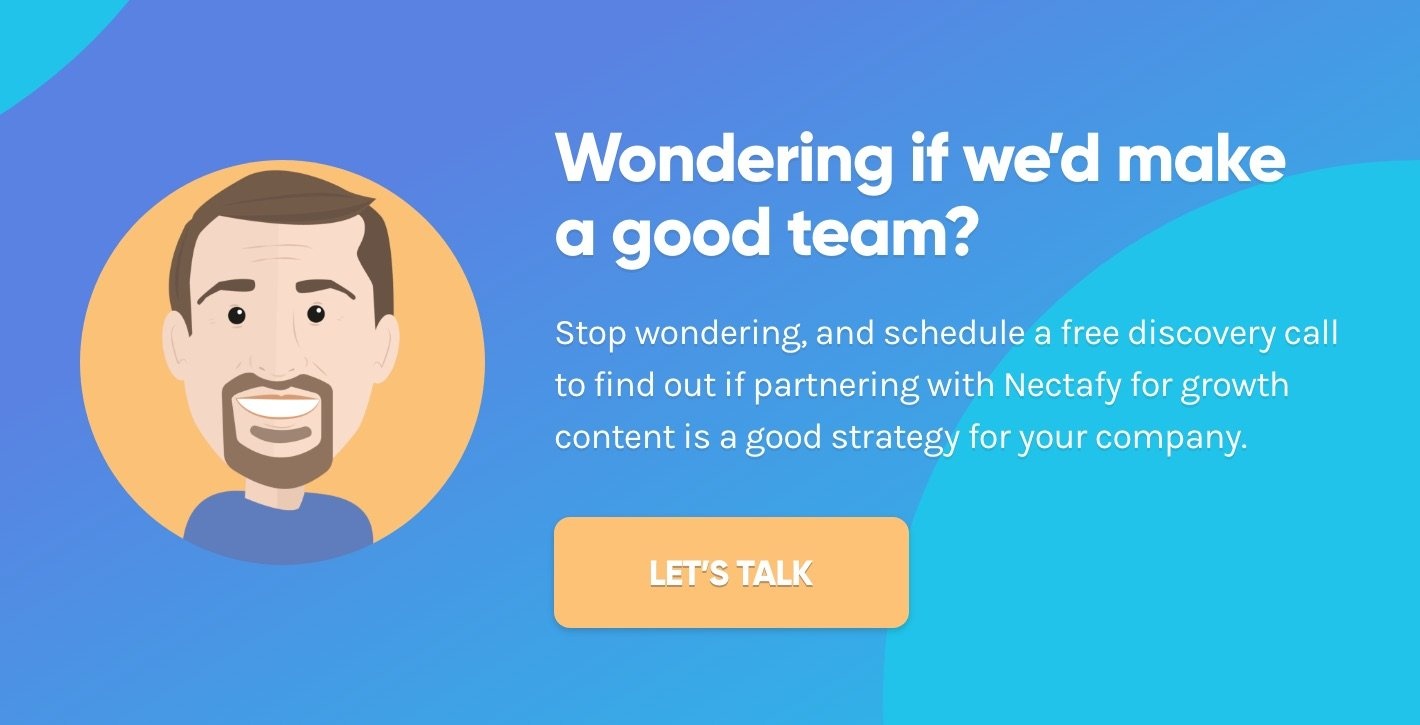You Aren't Getting Much Out Of HubSpot, Now What?: A HubSpot Training Guide



You aren’t getting much out of HubSpot.
[Insert sad emoji here.]
It’s painful—and painfully obvious—you spent a lot of money because you thought it would help your marketing efforts, but one (or more) of the following has happened:
- You bought HubSpot hoping to improve your marketing, but nothing has changed. (For this article, we’re talking about HubSpot’s marketing tool, not the sales or support tools.)
- You bought HubSpot excited by the sales process and promise but now aren't using it.
- You bought HubSpot hoping to force yourself or your team to use it as a way to improve, but that hasn’t happened.
- You bought HubSpot and hired an agency to help you with it, but you aren't seeing results.
Is there anything you can do to fix it, or did you just light a pile of cash on fire? Keep reading to see what might have happened, how you can fix it, and where you can go to get help.
It’s [probably] not HubSpot; it’s you.
To see if your HubSpot experiment is salvageable, you need to understand how HubSpot operates—this might explain why you’re not getting anything out of it. We like to use the car analogy:
Think about Hubspot as a high-powered race car with all the bells and whistles. It’s an amazing machine to get you from Point A to Point B. But this car is a Formula One race car, not an auto-piloted vehicle—it needs an experienced driver to operate it, gas and motor oil to keep it running, and maintenance when issues arise (and even before).
In my analogy:
- The experienced driver is you (or someone at your company)
- The gas and motor oil are the content your team is creating, and
- Maintenance is the strategy that helps you get to the finish line.
Chances are, if your HubSpot engine is just sitting there, it’s because you expect the vehicle to run on autopilot. It simply won’t, so it’s still sitting in the garage. So how can you get this investment to do what it was designed to do—quickly move you from one place to the next?
How To Make HubSpot Useful: A 4-Step HubSpot Training Guide
1. Appoint one person responsible for your company’s marketing growth.
Your company needs to assign a single person who will be in charge of everything marketing-related for your company. They need to take complete ownership of marketing growth. (Note that I didn’t say they need to be responsible for “running HubSpot”—if you simply give them the role of HubSpot Czar, they’ll deliver basic tasks related to the tool.)
Who should be your marketing person?
Not the founder. In our experience, this person should not be the founder of the company. For most small and midsize companies, the founder has too much other stuff to do, so marketing gets pushed to the backburner. But you can’t justify not doing marketing for months at a time because you’re busy with other things. By delegating this role, you can make sure marketing is done consistently.
So, that leaves you with three options:
1. Consider someone who already works within your company.
Do you already have someone within your company who is interested in marketing and has a knack for it? Appointing someone internally might be a good fit; just keep in mind that you’ll be trading marketing for whatever their current value is to your company. If they like marketing and creating content, you’ll have to free up most of their time to do it.
Cost: Probably a tradeoff. While you’ll have lost productivity in other areas to which they were previously assigned, you could potentially see marketing growth. Economically, we’d bet it ends up to be the same—you’ll lose productivity in one area and have it shift to another area.
2. Hire a strategist.
If you don’t have anyone internally, consider hiring a marketing strategist to take ownership of the role. This person should be responsible for the following tasks:
- Develop personas and conduct keyword research for clients to attract the right leads.
- Create content calendars that drive organic traffic and lead growth.
- Dig through data to reveal the opportunities that help our clients take the next step toward growth.
- Report on growth content results in a way that's meaningful and helpful to clients.
- Collaborate with a small team consisting of a dedicated content creator, editor, designer, and developer to produce amazing results for our clients.

If you want to learn more about considerations for hiring a strategist for your company, here’s the entire process of how we hired Matt, our Nectafy marketing strategist.
The major consideration about hiring a strategist as a net new role is that this person will be in charge of the strategy and the marketing growth, but they probably can’t be expected to do the rest of the marketing, which includes hiring writers, designers, and developers.
You’ll also be paying a full-time salary, plus benefits, for this role, as well as the costs for the other roles you’ll need to fill. (We’d estimate around $65,000 for the strategist’s salary, plus benefits, plus the costs of contractors to do the other parts of creating content.)
3. Hire an agency (like Nectafy).
Hiring a growth content or content marketing agency like Nectafy is another option to weigh. When you hire an agency, you'll likely spend a minimum of $50,000 per year all-inclusive. Unlike hiring a strategist, that amount includes everything. Our clients get a strategist, a team of writers, designers, and developers, and a client happiness manager to help them reach their goals—all of these individual roles are included, which ends up being the cost equivalent of an efficient part-time role that doesn’t require paying benefits.
We put HubSpot to the test for our own company–here’s what happened. Download the whole (100-page) thing now and find out the good, the bad, and the ugly.
2. Set goals.
Once you’ve identified who’s in charge, that person should set goals to help your entire team benchmark where you are and where you want to be. This step is important! If you skip it, you won’t consistently post (because you have nothing holding you accountable), and you won’t grow.
The best way to begin when you’re starting from little-to-no existing marketing is to pick a handful of KPIs (three to five) and set goals for each of them. We recommend always including the following KPIs:
- Number Of Website Visits: Measures the number of visits to your website.
- Number Of Leads: Measures the number of website visitors that become leads.
- Number Of Customers: Measures the number of customers generated through content marketing.
See also: https://www.nectafy.com/blog/content-marketing-kpis
These KPIs make up your marketing funnel. Tracking the number of visits, leads, and customers your website generates will bring key insight into how well you’re doing with your content marketing efforts, so you should always be sure to monitor and report on them consistently.
You can use our calculator to help you with your goal setting—you input your own current numbers, and it will help you forecast potential, realistic organic visits over the first year. The numbers are based on the average returns for Nectafy clients, past and present.
How much could your company grow with growth content?
Calculate your expected growth in organic visits based on the average Nectafy client.
Get all these numbers in your inbox.
If you’re partnering with an agency to help you with marketing, your agency should help with forecasting and deliverables to get there.
It’s not enough to set measurable goals. You need to be monitoring and reporting on these goals at least once a month. HubSpot can help you with this.
3. Get training or experience.
Now that you’ve identified your marketing maestro and that person (or the team they have assembled) has set goals and is tracking them, you need to get some training or experience working with HubSpot. Here are some recommendations:
- HubSpot certifications, specifically, HubSpot’s certifications for marketing software, inbound marketing, and content marketing.
- Other valuable resources and experts:
- Backlinko
- Gotch SEO
- Content Marketing Checklist - 25 Things That You Really Should Try
- See also: Who Actually Knows What They're Talking About In Content Marketing
- The best way to gain immediate expertise is to hire an agency (like Nectafy) to be responsible for and provide expertise and delivery. Depending on the type of expertise you’re looking for, not all agencies are equal. You can see HubSpot agencies by type/tool here.
4. Create content consistently.
Once you’ve done all of the things listed above, it’s time to create great content. This is the key to powering everything you’ve worked on in the previous steps.
Getting results from HubSpot is really about creating great content for your personas. You can do that without HubSpot…it's just a lot easier and more effective to do in HubSpot. And if you have HubSpot and no content, I can guarantee you will get no results!
How To Create Great Content
Set a content calendar.
This will be the tool your team uses to track and manage the blog posts, offers, etc. that you need to create throughout the month. We call our content calendar a NectaPlan—here’s what it looks like:

We suggest including at least the following elements on your content calendar:
- Author
- Due date
- Publish dates (Target and Actual)
- Title
- Type of post
- Keywords
- Subject matter expert
Follow our phase plans.
At Nectafy, we develop and execute strategies for growth content based on our clients’ levels of visits and Domain Authority. We’ve split these into three phases:
Phase 1: Authority Building
For companies that are just starting to work on their growth content.
Fewer than 1,000 visits per month and a Domain Authority of less than 20.
Focus on: Non-competitive keyword targets, relevant backlinks, and long-form content in order to build Google’s trust.
Phase 2: Keyword Cultivation
For companies that have passed Phase 1 and are bringing in some leads and want to accelerate their growth.
From 1,000–25,000 visits per month and a Domain Authority from 20 to 50.
Focus on: Higher-volume keywords, long (3,000+ word) posts, content offers, and landing pages to grow faster.
Phase 3: Sales Growth
For companies that have outgrown Phases 1 and 2 and are ready for distinctive content in their industry.
Greater than 25,000 visits per month and a Domain Authority from 50 to 100.
Focus on: Cultivating rankings for top keywords and measuring each content piece by sales outcomes.
If you’re reading this article, you’re probably in Phase 1. For a step-by-step plan to follow, read this article. It details the types of content your company needs to write in order to grow authority.
They work—we’ve used them to help our clients and ourselves grow the number of organic visits, leads, and customers.
What if you’re doing all of this, and HubSpot’s still not working for you?
If you have done everything listed above and you still aren’t getting much out of HubSpot, it’s time to troubleshoot. Here are some common situations we’ve seen that contribute to (or cause) problems that appear to be HubSpot issues (but actually aren’t).
- If your visits and leads haven’t grown at all over at least a 12-month period, revisit how you track growth. Are your goals realistic based on your phase?
- You may not be writing content for your personas. This is the most likely situation. Content marketing online is extremely competitive, and if you’re not targeting the right personas with the right content, you will get outplayed.
- You may not understand SEO. Focus on low-competition, low-difficulty keywords. Check out SEMrush to learn more about SEO; we also have some articles that may help.
- You may be expecting too much, too soon. If you haven’t worked on your content through HubSpot for at least a year, you haven’t tried it for long enough. Give it at least a year.
- You may have a problem with your physical website. Make sure your site is optimized for mobile, loads quickly, and isn’t being penalized for unfriendly practices.
Now Take Action.
It’s up to you (well, that person you identified in step one :) ) to go through each of these steps and execute the associated tasks. If you do these things, you will see improvement over time!
And if you need some help figuring out your game plan and executing it successfully, let’s talk about how we can help!

